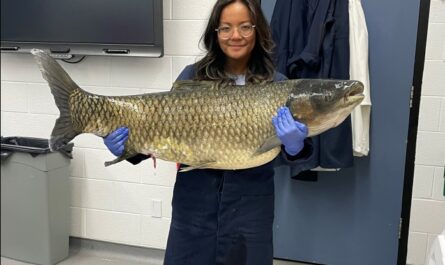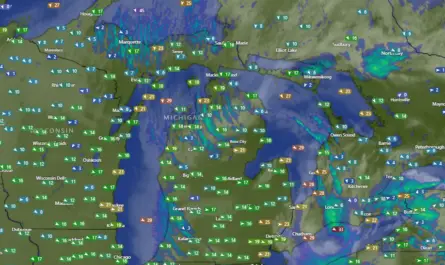For the first time in recorded history, we see flamingos in Lake Michigan on a busy beach in Wisconsin. This unprecedented event has not only delighted locals but also raised questions about the changing patterns of wildlife migration.
Five flamingos were seen gracing the shores of Port Washington, a city located 27 miles north of Milwaukee. The group consisted of three adults, flaunting their iconic pink plumes, and two gray juveniles, according to the Wisconsin Society for Ornithology. These birds, native to warmer climates like Mexico and Cuba, seemed quite content as they basked in Wisconsin’s nearly 80-degree weather. The beach’s parking lot was overflowing with onlookers, eager to witness this historic moment.
The New York Post noted the sighting has caused quite a stir among the local community. Hordes of birdwatchers, like Jim Edelhuber of Waukesha, flocked to the area to catch a glimpse of these exotic visitors. “This is huge,” Edelhuber exclaimed, encapsulating the sentiment of many who rushed to view the waterfowl after word of their visit spread like wildfire on social media.
But how did these tropical birds end up so far from their native habitats in Mexico and Cuba? Wildlife biologists theorize that the flamingos were blown off course by the intense gusts of Hurricane Idalia. This natural disaster has had a ripple effect, leading to dozens of flamingos appearing in unusual places across the country, including Indiana, Kentucky, Ohio, and Pennsylvania.
Interestingly, this is not the first time this year that Wisconsin has been graced by an unusual avian visitor. Earlier in May, the flame-colored tanager, a tropical bright orange bird, was spotted in nearby Cudahy. These occurrences beg the question: are these isolated incidents, or are they indicative of broader changes in our ecosystem?
Flamingo Were Once Very Rare
The presence of flamingos in Wisconsin also serves as a poignant reminder of the fragility of wildlife. Flamingos used to call Florida their home until they were hunted to near-extinction in the early 19th century due to fashion trends favoring feathers. Today, the rare flamingos that reside in Florida make up a mere 1% of the global flamingo population and live in semi-domesticated environments.
Flamingos in Lake Michigan: A Question of Survival
Flamingos are primarily filter-feeders, relying on their specialized beaks to sift through water and mud to consume small organisms like algae, plankton, and tiny crustaceans such as brine shrimp. Their diet is rich in carotenoids, natural pigments found in their food, which give them their iconic pink coloration.
Now, the question arises: Can flamingos survive in Lake Michigan?
Lake Michigan is a freshwater body, and its ecosystem is quite different from the saline and alkaline habitats where flamingos typically thrive. While the lake does support a variety of fish and other aquatic life, it may not provide the specific diet that flamingos require for long-term survival. Additionally, the colder temperatures of Lake Michigan, especially during winter, could pose a significant challenge to these tropical birds.
However, it’s worth noting that flamingos are highly adaptable creatures. They have been known to inhabit a range of environments, from salt flats to freshwater lakes, across different continents. But even with their adaptability, the long-term survival of flamingos in Lake Michigan would be uncertain without human intervention, such as supplementary feeding and habitat management.
For more on this fascinating story, you can read the original article on the New York Post and the Journal Sentinel.
Other News on Thumbwind
He Inspired Cheeseburger in Caseville – Jimmy Buffett Dead at 76
81-Year-Old Man is Run Over by Driverless Tractor in Huron County




